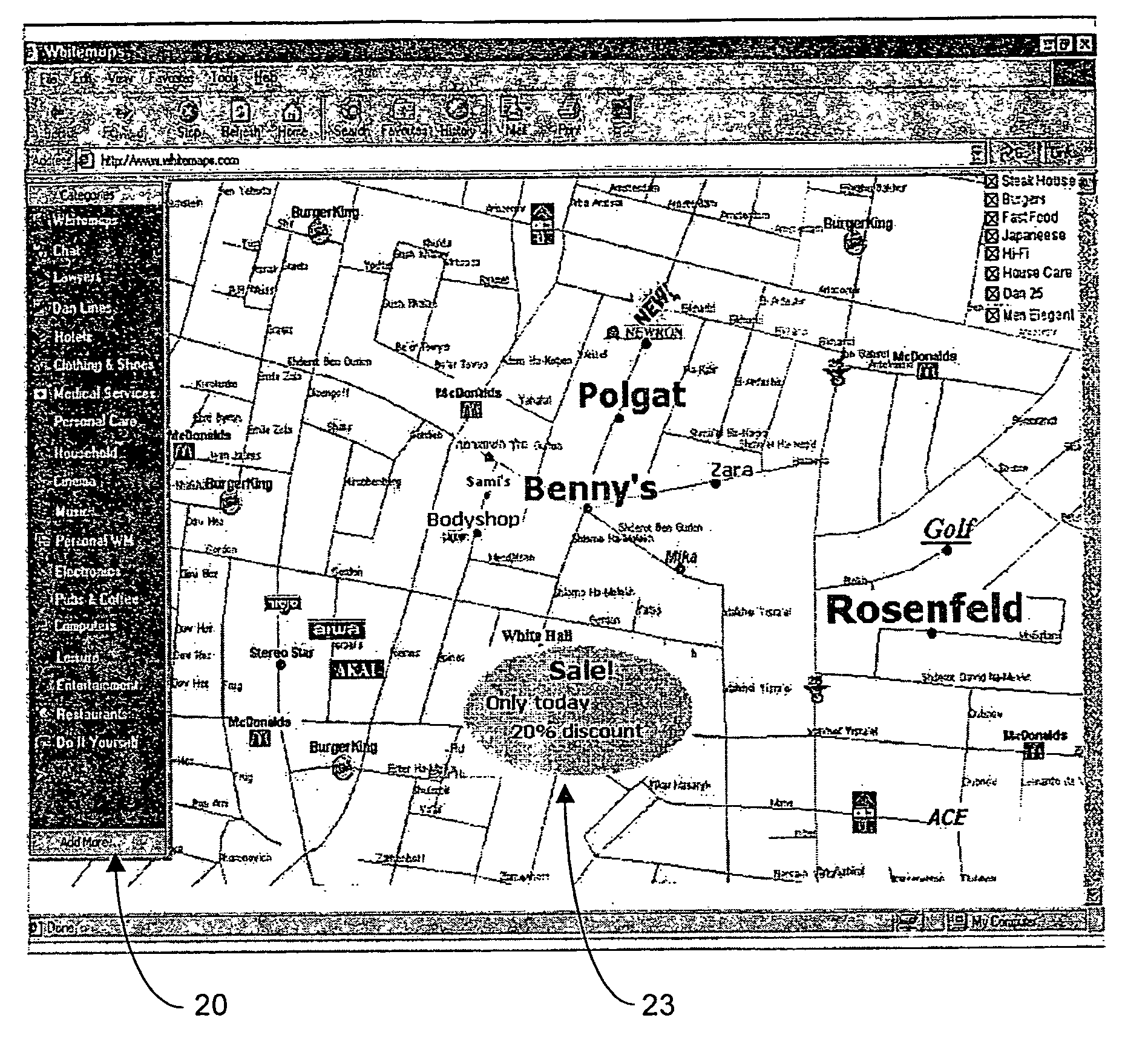Method and system for presenting on-line “Yellow Pages”, particularly in association with location data
a technology of location data and yellow pages, applied in the field of high-bandwidth network transfer of large map images, can solve the problems of high critical time it takes for a web page to be loaded in the user's remote machine, slow and limited process, and no sense in including high-volume elements
- Summary
- Abstract
- Description
- Claims
- Application Information
AI Technical Summary
Benefits of technology
Problems solved by technology
Method used
Image
Examples
Embodiment Construction
Overview
[0079]FIGS. 1 and 2 are flow diagrams showing the principal operating steps carried out by a map server and a client machine, respectively, for downloading sufficient map data to the client machine to obviate the need to download further map data in order to execute navigation commands input to the client machine. Thus, data is stored in a database on the map server in layered format, each layer including geometrical entities associated with the map in minimized vector format and / or descriptive information in text format relating to the geometrical entities. The map server extracts map data layer by layer and downloads in compressed format to the client machine, which reconstitutes and caches the map data and displays at least part of the map data. The whole process is repeated layer by layer so that the detail of the map picture displayed by the client machine is progressively augmented. During this process, an operator of the client machine may enter navigation commands so...
PUM
 Login to View More
Login to View More Abstract
Description
Claims
Application Information
 Login to View More
Login to View More - R&D
- Intellectual Property
- Life Sciences
- Materials
- Tech Scout
- Unparalleled Data Quality
- Higher Quality Content
- 60% Fewer Hallucinations
Browse by: Latest US Patents, China's latest patents, Technical Efficacy Thesaurus, Application Domain, Technology Topic, Popular Technical Reports.
© 2025 PatSnap. All rights reserved.Legal|Privacy policy|Modern Slavery Act Transparency Statement|Sitemap|About US| Contact US: help@patsnap.com



